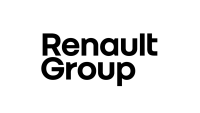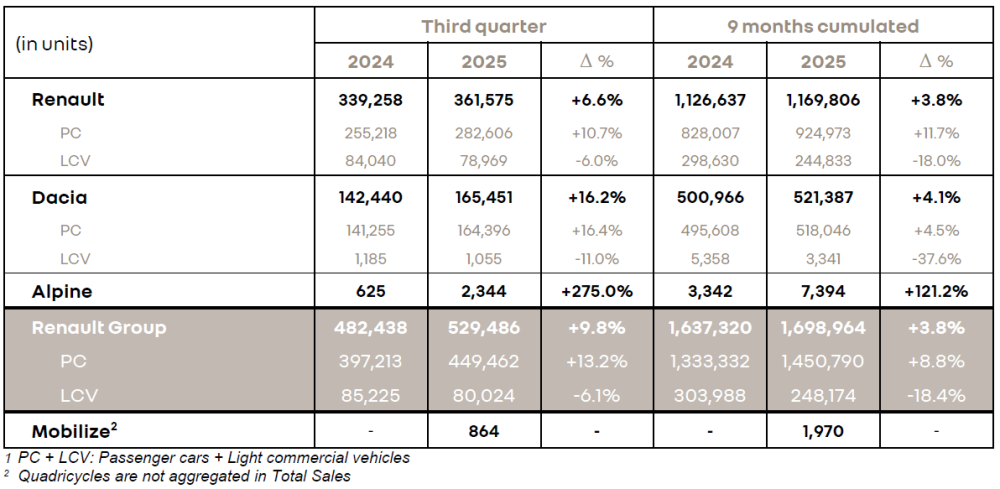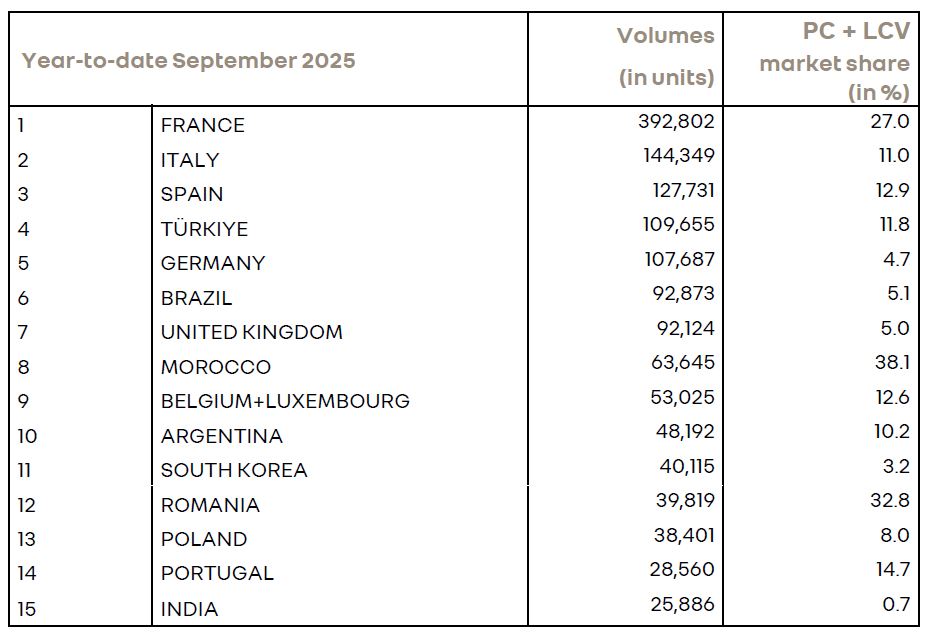Victor Wembanyama filled the stat sheet Wednesday with 40 points, 15 rebounds, 6 assists and 3 blocks.
DALLAS — They arrived on this night of heavy anticipation to see the future, absorb the hype and fully understand what made him an in-demand…

Victor Wembanyama filled the stat sheet Wednesday with 40 points, 15 rebounds, 6 assists and 3 blocks.
DALLAS — They arrived on this night of heavy anticipation to see the future, absorb the hype and fully understand what made him an in-demand…

Yinson GreenTech, a leading green technology solutions provider, has unveiled the Hydromover 2.0 through its marine electrification solutions business, marinEV. The all-new vessel boasts longer range, faster charging time and larger cargo capacity, while integrating the next wave of digitalisation and electrification technology in maritime operations, setting a new benchmark for zero-emissions cargo transfers in ports worldwide.
Building on the success of the Hydromover prototype, Singapore’s first fully electric cargo vessel launched in November 2023, the latest Hydromover 2.0 introduces multiple key features, including increased energy storage capacity, an advanced hull form that minimises drag, and a redesigned electrical architecture to reduce power loss. These improvements translate into a threefold increase in range that can cover all anchorages within Singapore’s port limits. Fully charged in under two hours, the vessel ensures high uptime and reliability for daily operations. The Hydromover 2.0 also boasts 25% more cargo capacity and a 75% larger deck space, supporting greater cargo consolidation, efficiency, and flexibility in port operations.
The Hydromover 2.0 also represents a major step forward in Yinson GreenTech’s vision to combine electrification and digitalisation in maritime operations. Beyond its zero-emission propulsion, the vessel fully integrates marinEV’s Marine Digital Platform, enabling real-time analytics, route optimisation, automated vessel management, and data-driven decision-making. This powerful combination of clean energy and smart technology positions the Hydromover 2.0 as a catalyst for transforming traditional port operations into connected, efficient, and intelligent ecosystems – setting a new benchmark for sustainable maritime logistics in Singapore and globally. See Annex A for detailed specifications.
At the launch event, Yinson GreenTech signed its first bareboat charter agreements with Yacht International UAE, marking a significant milestone in the vessel’s entry into the maritime market. Deliveries of the Hydromover 2.0 vessels to United Arab Emirates (UAE) are expected to be completed by mid-2026. Additionally, a Memorandum of Understanding (MoU) was executed between Yinson GreenTech, Yacht International UAE, and Wilhelmsen Port Services to grow the adoption of electric vessels in ports throughout the UAE.
Jan-Viggo Johansen, Managing Director of marinEV, said:
“The all-new Hydromover 2.0 sets unprecedented standards for the modern maritime industry. At the same time, the signing of new agreements in the UAE marks a pivotal step forward for marinEV and Yinson GreenTech. Together, these milestones demonstrate our ability to move beyond innovation and into real-world deployment – taking proven electric vessel technology, connected IoT systems, and integrated digital platforms from Singapore to new markets. They reinforce our commitment to transforming port operations through the combined power of electrification and digitalisation, and to shaping a smarter, cleaner, and more connected maritime future.”
Prakash Vakkayil Bhaskaran, Chief Executive Officer of Yacht International LLC, commented:
“The launch of the Hydromover 2.0 marks a defining moment for the UAE maritime sector and for Yacht International. As operator of a fleet of 15 offshore support vessels & now one of the first operators to deploy fully electric vessels in the region, we are proud to contribute directly to the UAE’s Net Zero 2050 vision and Green Mobility initiatives. This project demonstrates that sustainable innovation and commercial efficiency can move hand in hand, setting a new benchmark for clean, smart, and responsible marine operations in our waters. This is more than a vessel launch — it is a statement of intent. The Hydromover 2.0 represents our commitment to shaping the next generation of marine logistics, powered by technology, data, and responsibility to our environment.”
This request seems a bit unusual, so we need to confirm that you’re human. Please press and hold the button until it turns completely green. Thank you for your cooperation!

Meghan OwenLondon work and money correspondent
 BBC
BBCRents across England continue to rise as the numbers of households in temporary accommodation across the country are at a record high.
Meanwhile, the amount of housing benefit private renters can claim – the Local Housing Allowance (LHA) – remains frozen – as it has been for most of the past decade.
Housing sector organisations, including landlords and homeless charities, are urging the government to unfreeze LHA, fearful that it’s driving more renters into homelessness.
Artist Esther Planas, 65, rents a one-bedroom flat in Hackney, east London and claims Universal Credit (UC).
She fears she is just one small rent rise away from homelessness.
“It’s like you’re in quicksand. Nothing is stable under your feet. Things mutate all the time. Rents are crazy, and nothing is out there to protect you.”
In 2023, Esther applied for homelessness after her landlord tried to rise her rent by £500 a month, which she couldn’t afford.
Hackney Council mediated and the rent rise was reduced to £200 a month – something Esther’s local housing allowance only just covers – but she fears it could happen again.
“I am really scared because for the moment, they’re letting me be… [but] if my rent was risen again I would have to claim homelessness.”
The Resolution Foundation think tank estimates that Hackney has the largest cash shortfall in London – at £350 a month – between the Local Housing Allowance rate and local rents, according to analysis of the latest data.
The foundation’s analysis omits four boroughs with the highest rents – which are calculated differently – and some boroughs don’t fall cleanly into LHA boundaries.

Forty organisations have sent a joint-sector letter to the government, calling for LHA rates to be unfrozen.
Alice Walker, Shelter’s assistant director of activism and advocacy, says “people have to choose between eating and having a roof over their heads. There are far too many people stuck in temporary accommodation because they can’t afford to pay their rent.”
According to research by Crisis, as of November 2024, almost half (48%) of the 1.6 million private rented households in receipt of UC had a shortfall between the support they received and their rent, and fewer than three in every 100 privately rented properties listed in England were affordable for people on housing benefit
Jenna Fassa from Hackney Food Bank says the increasing shortfall between LHA and local rents is driving more people to use their services.
“We see a large number of working people. It’s not unusual for us to see professions like nurses, the occasional firefighter, policemen – key-worker roles who can’t afford the rents in Hackney.
“It’s not unusual for our visitors to be living in mouldy, damp and draughty conditions or small buildings where there isn’t enough space.”
The National Residential Landlords Association has also joined calls to unfreeze the LHA rate.
Chief executive Ben Beadle said: “If the government is serious about improving access to rented housing, it has to unfreeze the Local Housing Allowance. It cannot be right that a system designed to support rental costs is failing to reflect rents as they actually are.”
However, renters’ groups including the Renters’ Reform Coalition are calling for the government to focus on capping rent increases.
Jae Vail from the London Renters Union warns that “we cannot allow private landlords to profiteer and collect billions more pounds of public money every year”.

LHA rates were increased to the 30th percentile of local market rents in April 2024, at a cost of about £7bn over five years across Britain.
A spokesperson for the government said it was tackling rising rents and the housing shortage with its commitment to build 1.5 million homes, including “the biggest boost to social and affordable housing in a generation.”
“We’re also putting more money in people’s pockets by uprating benefits, making Universal Credit deductions fairer, and helping people move out of poverty and into good, secure jobs as part of our Plan for Change.”

Over the past four years, we have repositioned Sodexo as a pure-play food and services company. We have streamlined our portfolio, sharpened our focus on core activities, whilst continuing the transformation of our operating model. These efforts have set a strong foundation for sustainable performance.
Our Fiscal 2025 results reflect both the progress achieved and the operational challenges we faced, particularly in the U.S. For Fiscal 2026, we remain laser-focused on addressing these challenges, with clear action plans already underway.
The appointment of Thierry Delaporte as Chief Executive Officer marks the opening of a new chapter for Sodexo, with commercial acceleration and rigorous execution being our key priorities. I am confident that our new governance structure will support the Group’s next stage of development and long-term success.
I want to sincerely thank all Sodexo teams for their dedication and commitment. Their engagement has been essential in driving change and positioning the Group strongly for the future.


Harriet HeywoodCambridgeshire
 Isobel Wright
Isobel WrightDoctors say a change in how Crohn’s disease is treated could save the NHS millions of pounds and significantly…

Ethan GudgeSouth of England
 Getty Images
Getty ImagesA former student of world-renowned fantasy novelist Sir Philip Pullman has said he was “fantastic and really engaging” teacher.
The final…
ALERT! You are entering into a secured area! Your IP, Login Time, Username has been noted and has been sent to the server administrator! This service is restricted to authorized users only. All activities on this system are logged. Unauthorized access will be fully investigated and reported to the appropriate law enforcement agencies.
Ref: 87.118.116.236 1761196265

“In a highly challenging environment, we continue to capitalize on our compelling and competitive line-up – spanning electric, ICE, and hybrid vehicles – driving a 6.8% increase in Group revenue this quarter. We also benefited from the strong performance of Mobilize Financial Services, our financial captive, which remains a strategic asset for both current operations and the Group’s long-term ambitions. With the target to be the best in what we can control, we remain fully committed to our value over volume strategy, while maintaining strong focus on executing our cost-reduction roadmap. We confirm our full-year guidance, targeting a Group operating margin around 6.5% and free cash flow between €1.0bn and €1.5bn. In parallel, we are actively shaping our next mid-term plan, designed to accelerate the Group’s transformation and unlock future opportunities.” said Duncan Minto, Chief Financial Officer of Renault Group.
Boulogne-Billancourt, France, October 23, 2025
In 2025 Q3, Renault Group achieved a 9.8% increase in registrations compared to the same period in 2024, with a total of 529,486 vehicles sold. Both international and European sales contributed to this performance, up 14.9% and 7.5% respectively. In Europe[4], passenger cars sales grew by 10.9%, outperforming a market up 7.5%, while LCV sales have shown improvement sequentially, yet remaining 7.1% below 2024 Q3. All brands were up (PC, Europe): Renault +5.5%, Dacia +16.1%, Alpine +306.4%.
During the first nine months of 2025, Group sales were up 3.8% reaching 1,698,964 vehicles, with the three brands growing. In Europe, PC sales were up 6.9% for a total of 1,003,085 vehicles sold. In the international market, Renault brand sales (PC+LCV) were up in Latam (+17.3%), South Korea (+213.7%) and Morocco (+46.3%), confirming the success of its International Game Plan.
Renault Group maintained its strategy:
In the first nine months, Renault Group electrified vehicle sales rose by 58.6%, now representing 43.9% of total sales.
In 2025 Q3, Renault Group’s electrified vehicle mix reached 44.0% of the total sales up 10.8 points compared to 2024 Q3.
In the first nine months of 2025, Renault sold 1,169,806 vehicles worldwide, marking a +3.8% increase, compared to the same period last year. In Europe[8], Renault PC recorded a +7.5% increase, the second-highest growth among top fifteen automotive brands, with 546,314 vehicles sold. The brand’s PC market share rose by +0.3 points reaching 5.5%. Renault International Game Plan continues to deliver strong results, with +15.6% growth (PC+LCV) in the international market compared to last year.
In 2025 Q3, Renault delivered a strong performance, with 361,575 vehicles sold, a 6.6% growth compared to 2024 Q3.
Internationally[9], Renault grew in its strategic regions, posting a +14.2% increase overall. In Latin America, the brand rose by 6.8% thanks to Kardian with further momentum expected from the upcoming launch of Boreal in Brazil this November. In South Korea, Grand Koleos made the brand grow by 54.7% compared to 2024 Q3. In Morocco, Renault achieved a +42.6% growth, with 9,258 vehicles sold, again supported by Kardian’s success.
In Europe, the brand grew by 1.8% (PC+LCV) thanks to a 5.5% PC growth and a LCV performance (-7.0%) showing signs of recovery following a challenging first half[10] of the year. Growth was especially high in Germany (+27.9%) and in Spain (+11.9%).
Renault electrified[11] vehicles accounted for 60.0% of the brand sales (+9.6 points vs. 2024 Q3). Renault EV sales surged by +84.7%, to reach more than 20% of Q3 sales (+8.7 points vs. 2024 Q3) thanks to Renault 5 E-Tech, the B-segment EV leader in Europe, and Scenic E-Tech, the C-segment EV leader in France. Hybrid sales rose by +4.4%, thanks to Symbioz, the best-selling Renault hybrid, to reach 37.9% of the brand sales. Renault was the second brand for hybrid vehicles in Europe.
Over the first nine months, Renault EV sales were up 65.8% compared to the same period in 2024. Renault EV mix reached 17.4%, up 6.1 points compared to the same period in 2024.
In the first 9 months of 2025, Dacia brand sold 521,387 vehicles worldwide, up 4.1% compared to the same period in 2024. In Europe, with 449,634 passenger cars sold (+5.3%), the brand maintained its 9th position in the passenger cars market. It gained one place and was ranked 2nd on the European podium for passenger cars sold to retail customers, the brand’s core customer base.
2025 Q3 marked an acceleration for Dacia with 165,451 vehicles sold (+16.2%), a strong increase compared to the first two quarters of 2025. The brand posted a solid growth in the majority of European markets, with remarkable performances in Germany (+23.6%), Spain (+19.3%) and Belgium–Luxembourg (+37.5%). This momentum was largely driven by the success of Bigster, the second best-selling C-SUV since June in Europe on the retail market, which recorded 22,353 registrations during Q3 and more than 39,700 since the beginning of the year. It also registered more than 55,000 orders since its launch. Dacia Sandero confirms its success by being the best-selling vehicle in Europe, all distribution channels combined, with 66,233 units sold in Q3 and 218,089 units since January.
With Duster and Bigster, Dacia is accelerating the pace of its electrification[11]. Hybrid sales more than doubled, now accounting for 20.9% of the brand’s Q3 sales (+9.1 points vs. 2024 Q3). Over the first nine months, Dacia’s hybrid sales jumped by 170.0%.
In the first 9 months of 2025, Alpine sales more than doubled compared to the same period in 2024, to reach 7,394 vehicles.
In 2025 Q3, Alpine recorded 2,344 registrations, compared to 625 registrations in 2024 Q3. The A290, the recently launched electric sports city car, is now available in almost all of the brand’s countries, totaling 1,845 registrations over the period. The United Kingdom becomes the second largest market for the A290 after France. In addition, Alpine will soon open orders for the A390, its new electric sport fastback. The A110 maintained a solid momentum even if the orders of the current generation of A110 will close in the coming months before the arrival of the next generation 100% electric.
Group revenue for 2025 Q3 amounted to €11,426 million, up 6.8% compared to 2024 Q3. At constant exchange rates[12], Group revenue was up 8.5%.
Automotive revenue reached €9,816 million, up 5.0% compared to 2024 Q3. It included -1.8 points of negative exchange rates effect (-€167 million) mainly related to the devaluation of the Argentinean peso, the Turkish lira, the Brazilian real and the Korean won. At constant exchange rates1, it increased by 6.8%. This evolution was mainly explained by the following:
Mobility Services contributed €23 million to 2025 Q3 Group revenue compared to €14 million in 2024 Q3.
Mobilize Financial Services posted revenue of €1,587 million in 2025 Q3, up 18.4% compared to 2024 Q3, due to higher interest rates and to the increase of average performing assets (at €59.5 billion) which improved by 5.3% compared to 2024 Q3.
As of September 30, 2025, total inventories (including the independent network) represented 538,000 vehicles, a level in line with the normal seasonal evolution:
Looking forward into Q4, the Group expects the restocking at independent dealers to be well below the one recorded in 2024 Q4.
The high single-digit growth of the order intake in 2025 Q3 year-on-year is fueling the orderbook in Europe, which stood at 1.6 months at the end of September given the strong forward sales expected in Q4.
Renault Group confirms its 2025 financial outlook, updated on July 15, 2025:


Link to follow the conference on October 23, 2025, from 8:00am CEST and available in replay: 2025 Q3 conference streaming
[1] In order to analyze the variation in consolidated revenue at constant exchange rates, Renault Group recalculates the revenue for the current period by applying average exchange rates of the previous period.
[3] Unless otherwise specified, rankings are expressed over the first 9 months of the year.
[5] France, Germany, Italy, Spain, and United Kingdom
[6] 22 main brands PC segment, France, Germany, Spain, Italy and United Kingdom
[7] Scope: EV, HEV and PHEV passenger cars in Europe. Provisional data at the end of September 2025 based on the following European markets: Austria, Belgium, Croatia, Czech Republic, Denmark, Estonia, France, Germany, Greece, Hungary, Iceland, Irlande, Italy, Latvia, Lithuania, Luxembourg, Netherlands, Norway, Poland, Romania, Slovakia, Slovenia, Spain, Switzerland, United Kingdom
[10] 2025 H1 Renault LCV sales declining by 29.9% vs. 2024 H1
[11] Scope: EV, HEV and PHEV passenger cars in Europe. Provisional data at the end of September 2025 based on the following European markets: Austria, Belgium, Croatia, Czech Republic, Denmark, Estonia, France, Germany, Greece, Hungary, Iceland, Irlande, Italy, Latvia, Lithuania, Luxembourg, Netherlands, Norway, Poland, Romania, Slovakia, Slovenia, Spain, Switzerland, United Kingdom
[12] In order to analyze the variation in consolidated revenue at constant exchange rates, Renault Group recalculates the revenue for the current period by applying average exchange rates of the previous period.